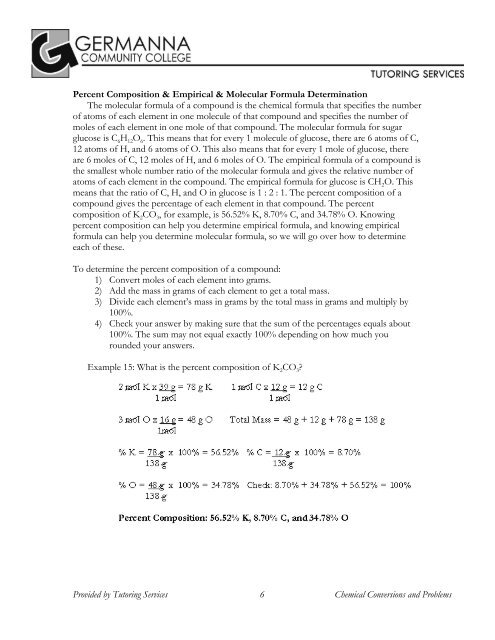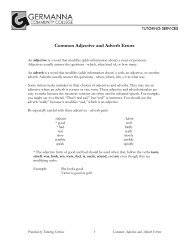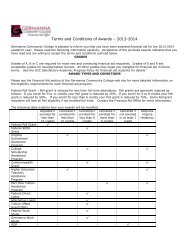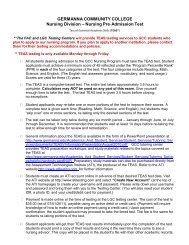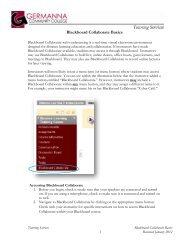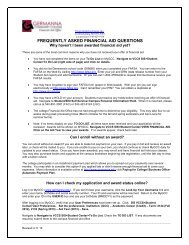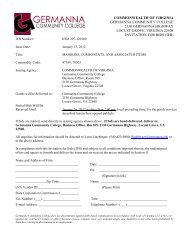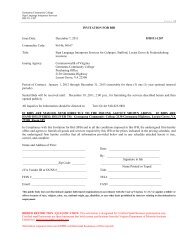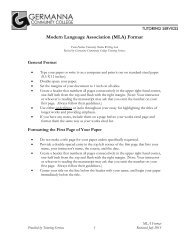Chemical Conversions and Problems - Germanna Community College
Chemical Conversions and Problems - Germanna Community College
Chemical Conversions and Problems - Germanna Community College
You also want an ePaper? Increase the reach of your titles
YUMPU automatically turns print PDFs into web optimized ePapers that Google loves.
Percent Composition & Empirical & Molecular Formula Determination<br />
The molecular formula of a compound is the chemical formula that specifies the number<br />
of atoms of each element in one molecule of that compound <strong>and</strong> specifies the number of<br />
moles of each element in one mole of that compound. The molecular formula for sugar<br />
glucose is C 6 H 12 O 6 . This means that for every 1 molecule of glucose, there are 6 atoms of C,<br />
12 atoms of H, <strong>and</strong> 6 atoms of O. This also means that for every 1 mole of glucose, there<br />
are 6 moles of C, 12 moles of H, <strong>and</strong> 6 moles of O. The empirical formula of a compound is<br />
the smallest whole number ratio of the molecular formula <strong>and</strong> gives the relative number of<br />
atoms of each element in the compound. The empirical formula for glucose is CH 2 O. This<br />
means that the ratio of C, H, <strong>and</strong> O in glucose is 1 : 2 : 1. The percent composition of a<br />
compound gives the percentage of each element in that compound. The percent<br />
composition of K 2 CO 3 , for example, is 56.52% K, 8.70% C, <strong>and</strong> 34.78% O. Knowing<br />
percent composition can help you determine empirical formula, <strong>and</strong> knowing empirical<br />
formula can help you determine molecular formula, so we will go over how to determine<br />
each of these.<br />
To determine the percent composition of a compound:<br />
1) Convert moles of each element into grams.<br />
2) Add the mass in grams of each element to get a total mass.<br />
3) Divide each element’s mass in grams by the total mass in grams <strong>and</strong> multiply by<br />
100%.<br />
4) Check your answer by making sure that the sum of the percentages equals about<br />
100%. The sum may not equal exactly 100% depending on how much you<br />
rounded your answers.<br />
Example 15: What is the percent composition of K 2 CO 3 ?<br />
Provided by Tutoring Services 6 <strong>Chemical</strong> <strong>Conversions</strong> <strong>and</strong> <strong>Problems</strong>


